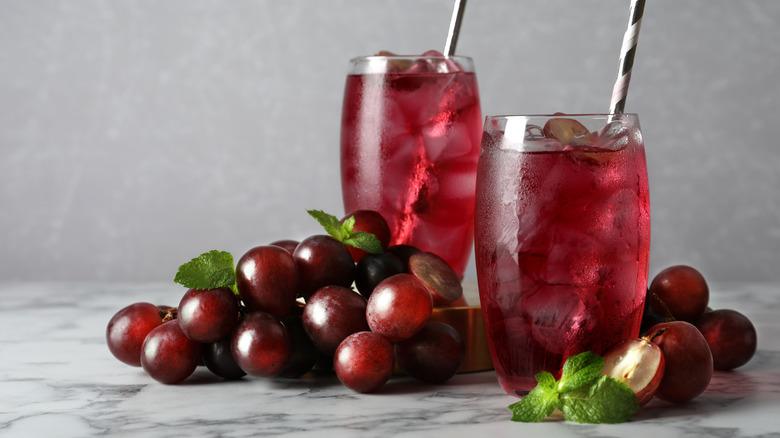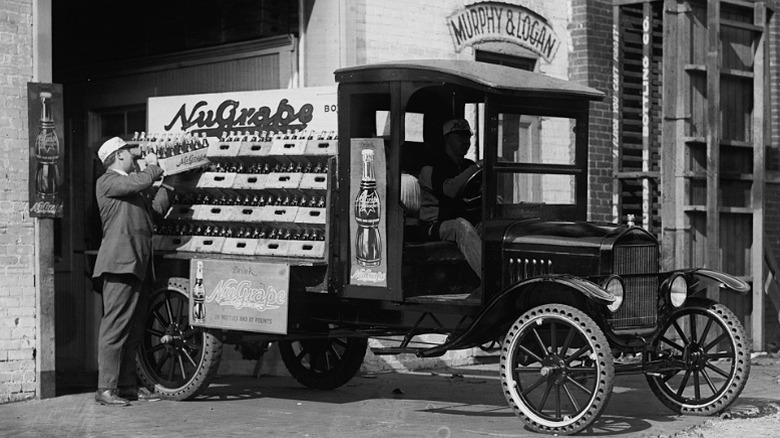How Grape Soda Became An Iconic Southern Drink
Grape soda (or pop, "coke," or soft drink — whatever you prefer to call it) is an artificially flavored carbonated grape beverage with a distinctly sweet taste. Many people are put off by the sugary mouthfeel, but Southerners tend to like their drinks on the sweet side, whether it's iced tea or lemonade. There are a few historical reasons why grape soda may still have such a stronghold in the region, but we can credit much of its popularity to the brand Grapico.
Grapico is one of the most famous grape soda beverages in the South (barring big names like Fanta and Crush). Similar to Cheerwine, another Southern delight, Grapico's recipe started with flavored syrup and carbonated water in the early 1900s. Artificial grape flavoring was only invented a couple of decades prior in the 1890s, and the Louisiana company J. Grossman's Sons company invented the Grapico beverage in 1914. Rights to manufacture the drink were later sold to the Pepsi-affiliated Buffalo Rock company in Birmingham, Alabama. Grapico took off ever since, and people in the deep South can still enjoy this beverage today.
Grape soda in Southern history
We can likely owe much of grape soda's success in the South to alcohol taboos around the prohibition era. Growing religious movements advocated against alcoholic beverages, and these cultural attitudes led to the 18th Amendment passing and persisted beyond it. Even now, Southerners consume less alcohol on average (via the PEW Research Center). One drink everyone of all ages could partake in without the social taboo was some crisp and refreshing soda.
During this time, there was improved access to clean drinking water, but many rural areas still struggled with gaining access as they relied on old well water systems. Bottled soda brands had the means to purify their beverages, which might've seemed safer to drink than municipal water. Southern bottling companies thrived in producing grape drinks during and after the prohibition era, such as Georgia's NuGrape, Arkansas' Grapette, and the iconic Grapico. In the 1950s, grape soda began to truly take off and become a more widespread commodity with the rise of industrialization and Coca-Cola products.
Not only did grape soda become popular in the South, but grape drinks in general. Several churches still substitute wine for grape juice in communion services today. Socioeconomic factors often shape food and drink history, but there's some culinary merit to these beverages, too. Southern cuisine can be salty and savory, so what better way to balance it than with a sweet grape drink? Don't knock it 'til you've tried it!

